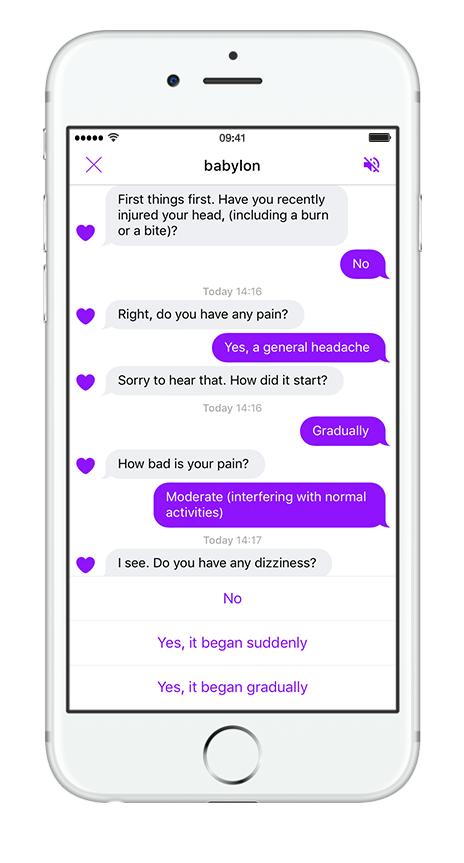In the previous chapter, “What is a Chatbot?” we learned:
- What is a chatbot?
- The purpose of chatbots,
- The evolution of chatbots, and
- How chatbots work
Taking it forward, now, in this blog, we will walk you through:
- The role of chatbots in modern businesses
- Common use cases for chatbots
- When to get a chatbot developed for business?
Let’s dive in.
The Role Of Chatbots In Modern Businesses
Time, money, & manpower are three of the most important resources for any business. They are the quintessential building blocks of success.
Chatbots contribute to the efficiency and productivity of not just one, but all of these resources.
How?
Let’s unravel the pivotal roles that chatbots play in saving time, money, and enhancing manpower productivity.
Save Time With Speed
Imagine you have an eCommerce store. Now say a customer has some queries about a product they wish to purchase. They can either send you an email or wait in a queue to speak to a customer care executive.
During peak season or rush hours, they might have to wait for several minutes or even hours to get a response. This waiting game can be frustrating and impact the overall shopping experience.
However, with chatbots, the delay is eliminated. Customers ask a question, and the chatbot immediately provides the answer, ensuring a swift and satisfying interaction.
This time-saving magic isn’t limited to just online shopping. Chatbots work their efficiency across various areas, automating routine tasks and swiftly handling inquiries in sectors like banking, travel, and information services.
They make sure that the work gets done without the lag time associated with traditional methods.
Save Money by Being More Productive and Efficient
Imagine a company heavily reliant on manual data entry for processing orders and managing inventory.
Without chatbots, this manual process can be time-consuming and error-prone, leading to inefficiencies and increased operational costs.
Now, introduce chatbots into the equation.
These intelligent bots can automate the data entry tasks, ensuring accurate and swift processing of orders and inventory updates. By reducing the reliance on human resources for these repetitive tasks, the company saves significantly on labor costs.
Chatbots operate tirelessly, eliminating the need for breaks or overtime pay, and they do it without the margin for error associated with manual data entry.
This cost-saving effect is not limited to order processing; chatbots bring similar efficiencies to various sectors.
In healthcare, for example, they can streamline appointment scheduling and basic inquiries.
In education, they can assist with enrollment processes and provide information on courses.
By automating these routine functions, chatbots become valuable assets in the company’s quest for financial efficiency, offering a reliable and cost-effective alternative to traditional manual processes.
Enhance Resources by Helping Humans Do More
The role of chatbots in enhancing resources goes beyond mere automation. They act as force multipliers for human capabilities.
By taking up menial and repetitive tasks, chatbots liberate human workers to focus on strategic initiatives, creativity, and tasks that demand emotional intelligence.
Imagine a scenario where a sales team is inundated with routine queries about product specifications or order status. Chatbots can efficiently handle these inquiries, allowing the sales team to concentrate on building relationships, understanding customer needs, and closing deals. This collaborative approach not only optimizes human resources but also creates a workforce that is more engaged, motivated, and focused on activities that drive business growth.
All-in-all, integrating chatbots into workflows becomes not just a choice but a strategic imperative. The result? A business that is not just surviving but thriving in the fast-paced, resource-intensive world.
Common Use Cases of Chatbots
By 2027, chatbots will become the primary customer support channel for 25% of companies across the globe.
This clearly shows that customer support is one of the most popular use cases for chatbots. However, their versatility extends far beyond this singular function.
Chatbots can be leveraged across domains and departments to increase efficiency, enhance user experience, and drive innovative automation.
Let’s explore some of these use cases in detail below:
1. Customer Support: The Classic Use Case
Undoubtedly, customer support is a fundamental application of chatbots. These virtual assistants excel at answering frequently asked questions, providing instant support, and resolving common issues.
Ask Julie by Amtrak is one of the best examples to consider. Julie makes booking, getting info, and planning vacations on Amtrak.com a breeze. No need to call – Julie knows it all. Plus, she can talk and type to give you the answers you’re looking for.

2. Lead Generation and Qualification: Expanding the Sales Funnel
Chatbots play a pivotal role in lead generation by engaging with website visitors and qualifying potential leads.
They can initiate conversations, gather relevant information, and direct qualified leads to the appropriate sales channels.
Machadalo, an Indian lead generation and lightweight CRM platform over WhatsApp does it best.
Machadalo’s Customer Assistant gathers B2B requirements from decision makers via WhatsApp and sends lead details directly to the Sales/Marketing heads. It can also take surveys and gather feedback. The chatbot also helps in lead management by letting Sales heads assign leads to the right team member via WhatsApp.

3. E-commerce Assistance: Guiding Shoppers to Seamless Transactions
In the eCommerce domain, chatbots assist customers in finding products, comparing options, and completing transactions.
Sephora, for example, employs a chatbot on messaging platforms to provide personalized product recommendations, offer beauty tips, and guide users through the purchase process, delivering a more interactive and tailored shopping experience.

4. HR and Recruitment: Simplifying Hiring Processes
Chatbots can be used to streamline HR and recruitment processes by answering candidate queries, scheduling interviews, and collecting essential information.
A good example is Tesco’s Tess Bot. Tesco, a huge retailer with multiple locations and many employees uses a chatbot to provide training to the workers and answer their queries.
The chatbot answers questions and gives the right info, day or night. It can handle over 150 common questions all by itself, and also leverages NLP to ensure better understanding & outcomes.
5. Internal Communication: Enhancing Team Collaboration
Chatbots contribute to internal communication by providing quick access to information, facilitating collaboration, and automating routine tasks.
Slack, a popular team collaboration platform, allows users to integrate a Slack chatbot to assist teams in managing workflows, accessing data, and coordinating activities, fostering a more efficient and connected workplace.
Take Niles, for example, which learns from conversations and answers employee questions so you don’t have to.

Chatbots are also being used in specific industries like healthcare, finance, event planning and many more.
Babylon Health, for example, utilizes chatbots to assess symptoms, provide health information, and connect users with medical professionals, enhancing accessibility to healthcare services.

These examples show that chatbots can do lots of different things in business, not just one. They’re flexible tools that can change how businesses work.
Does that mean every business should get a chatbot integrated into their system. Not really.
Let’s explore when and when not to use chatbots for your business.
Deciding When to Integrate Chatbots into Your Business Strategy
Here are key scenarios and signs that indicate it’s the right time to get a chatbot developed for your business:
- High Volume of Routine Inquiries
Your customer support team is overwhelmed with routine queries that follow predictable patterns.
- 24/7 Customer Service Demand
Your business operates in multiple time zones or has a global customer base with diverse time preferences.
- Frequent FAQs and Information Retrieval
Customers/Employees often seek information about products, services, or company policies.
- E-commerce Platform with High Traffic
Your online store experiences a high volume of website traffic, leading to numerous customer interactions.
- Lead Generation Challenges
Your business struggles with lead generation and qualification.
See any of the signs above? Make sure you speak to chatbot development and implementation experts to understand how a chatbot a help.
Cases When You Shouldn’t Get a Chatbot:
- If your business has minimal online presence or low customer interaction, investing in a chatbot may not be a priority. Focus on building your digital footprint first.
- If your business deals with highly complex and unpredictable queries that require human expertise, a chatbot may not be the ideal solution. Human agents may be better suited for such scenarios.
- If your business lacks the resources or commitment for ongoing maintenance and updates, implementing a chatbot may result in a suboptimal user experience.
While the adoption of chatbots is on the rise, it’s crucial for businesses to assess their unique needs and challenges before jumping on the chatbot bandwagon.
If the signs make it clear that you need a chatbot for business, you should first consider the types of chatbots available and select the one that best suits your needs. We will be exploring the types of chatbots in our next chapter. Have questions or need 1-on-1 chatbot consultation? Schedule a call with our team of experts right away.
















